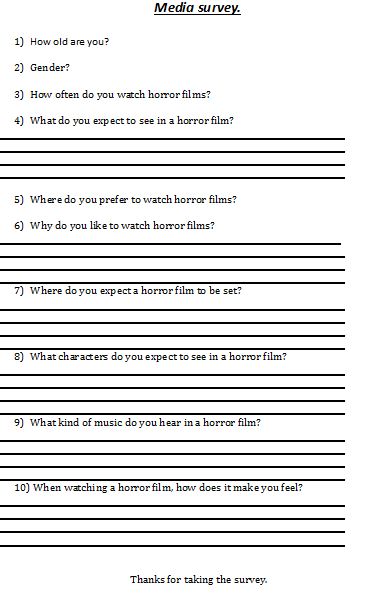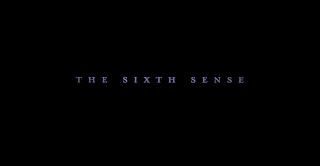Questionnaire Analysis:
 |
| This is an image of our survey which as a group had over 15 people fill out. |
As a group we got people to filled in over 15 of these surveys ranging in age, I believe this makes our research very reliable.
Analysis of question 1:
Through using this question we can then analyse further questions dependant upon the answer for this question.
Analysis of question 2:
Through using this question again we can evaluate the answers for further questions dependant upon the answer for this question.
Analysis of question 3:
Through using this question we then know how secure and reliable their answers are for further questions.
Analysis of question 4:
Through using this question we can then take ideas from the answers for this question and maybe incorporate them in our own horror opening sequence.
Analysis of question 5:
Through using this question we can then find out the majority of people who prefer to watch horror films at the cinema or at home then we know what should be shown for example if the majority said the cinema maybe you would put something to jump out on screen in.
Analysis of question 6:
Through using this question we know what people tend to enjoy or are attracted to in horror films which again we could incorporate into ours making it more successful.
Analysis of question 7:
Through using this question we can see if any answers have a pattern for example if a lot of people say the same thing and then we know for example not to include it because if we did ours wouldn't be unique or out of the ordinary.
Analysis of question 8:
Through using this question we can then know what is the norm and should we stick to it or not for example.
Analysis of question 9:
Through using this question we then know what is and isn't unique because if everyone says the same thing we then know its successful and then we can do further research into that film where the sound came from and take elements from it for example.
Analysis of question 10:
Through using this question we know if the majority of the audience feel scared or not and then we can look at their other answers and incorporate some of the ideas from the conventions they talk about from some horror films for example.










.jpg)






